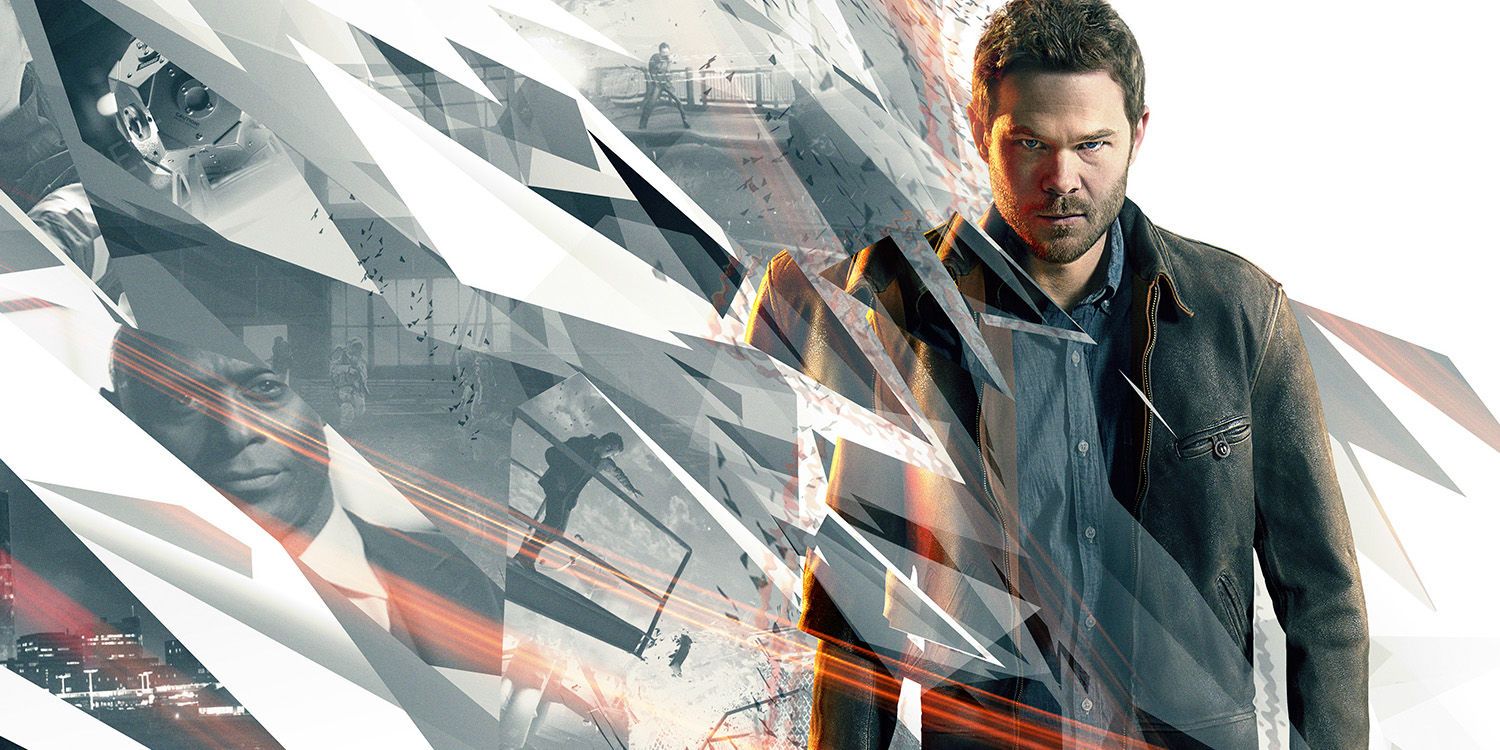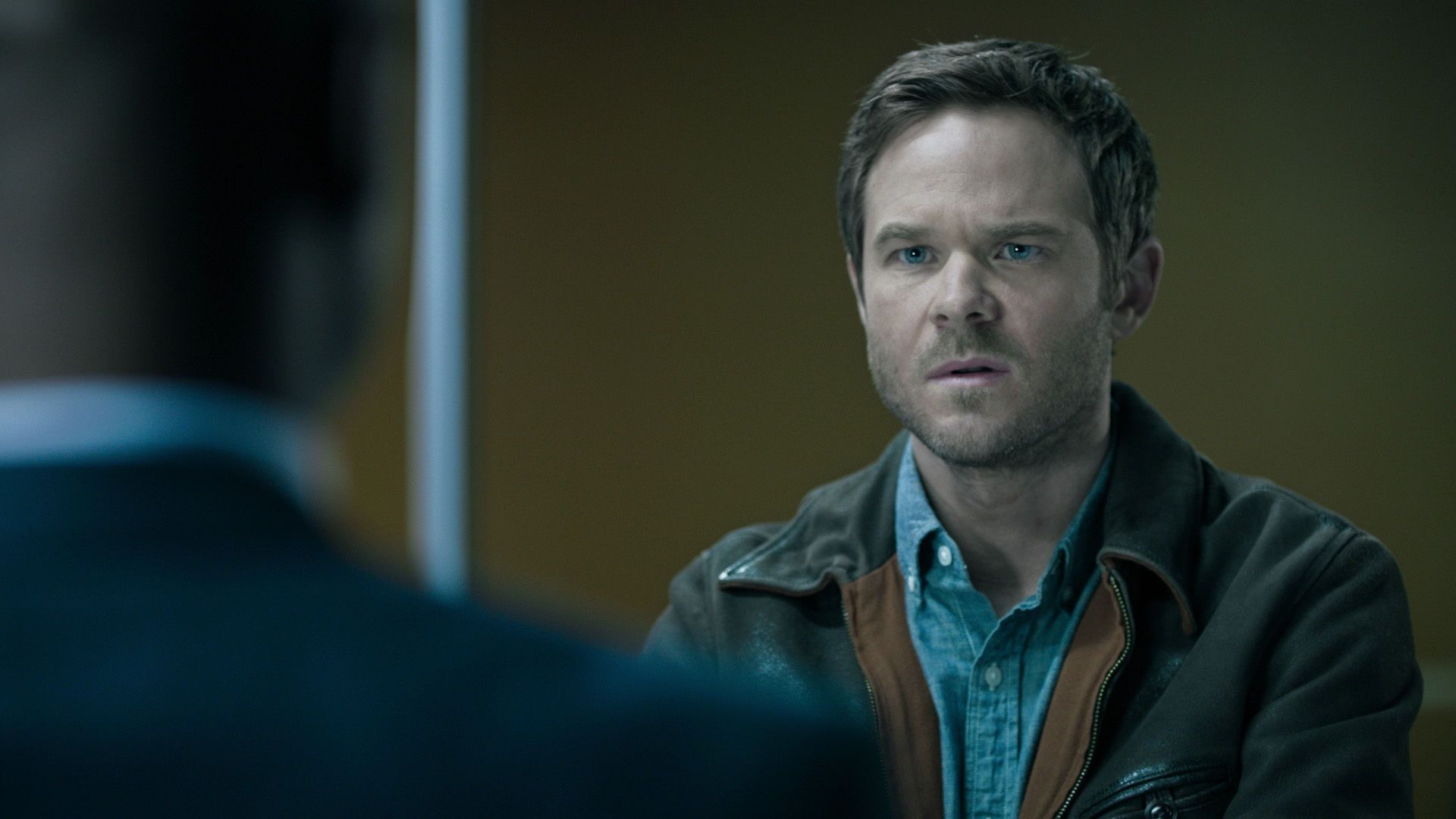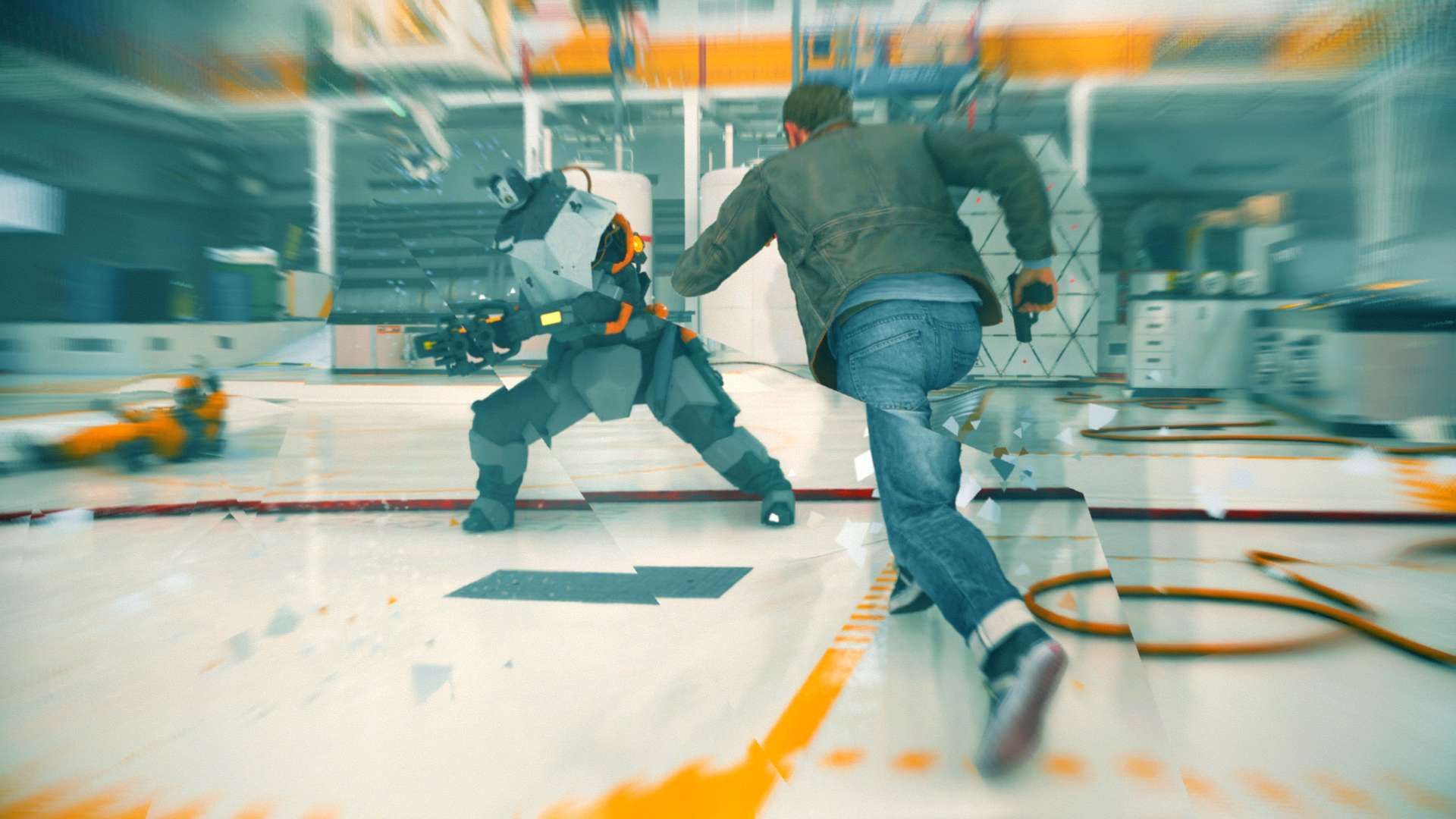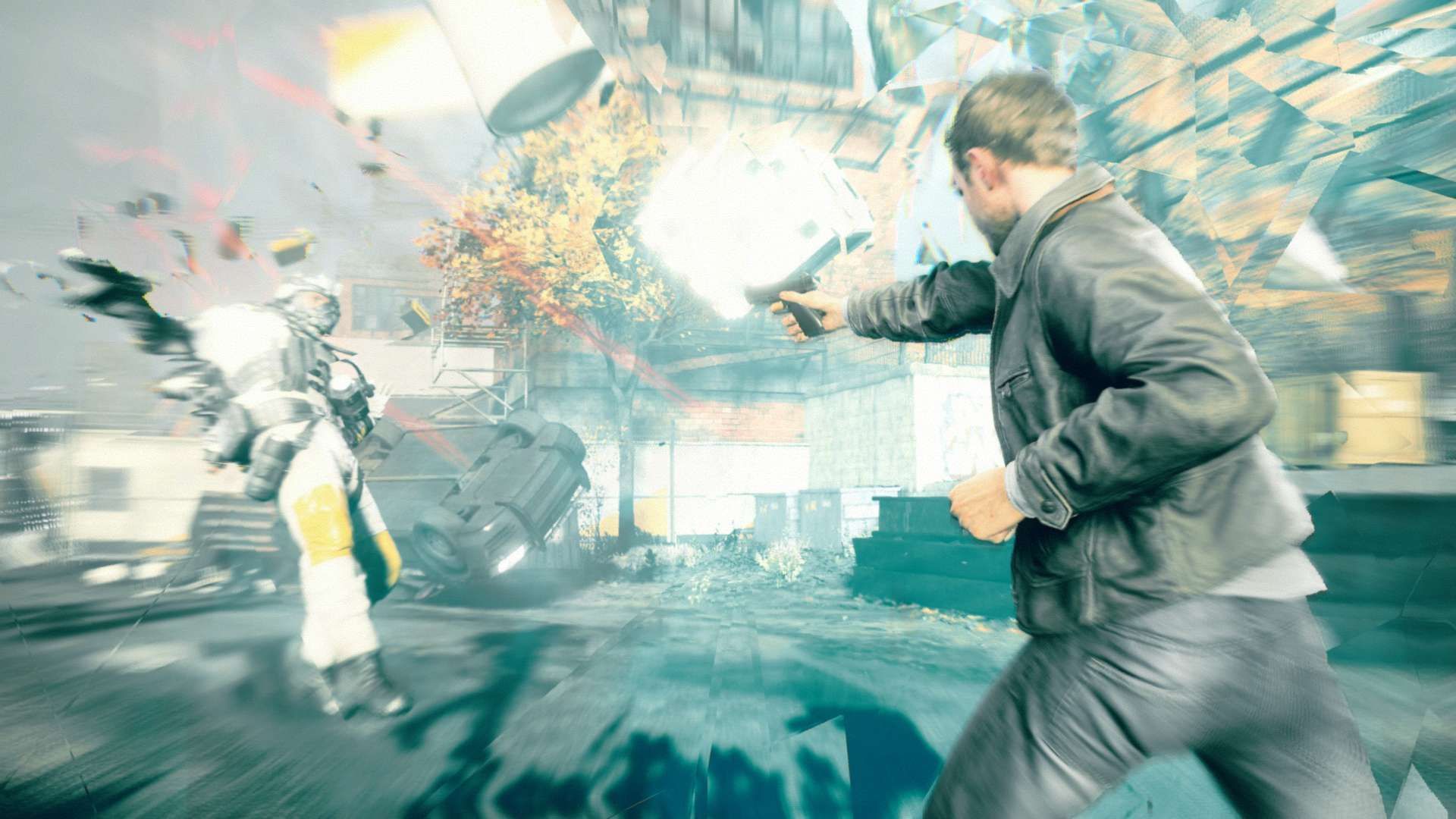When Microsoft first unveiled the Xbox One console in May 2013, so to did they unveil Quantum Break, one of their key exclusive games in development from Remedy Entertainment. With a newer and more powerful platform, and a reputation for unique story-driven games including Max Payne and Alan Wake, Remedy had much to live up to with their new IP and potential franchise-starter.
Quantum Break is also attempting to do something more by ambitiously weaving in player choice to the narrative alongside live-action episodic content featuring big-name Hollywood talent. But does that experiment work and does the repeatedly delayed game live up to the hype? Yes. Quantum Break is one of the coolest and best story-driven experiences we've played in a long time.
For players looking for a deep, character-driven story that'll bend your mind as it does your concept of time, Remedy's latest is for you. Quantum Break is a gorgeous game with incredible art and sound design and used to pull players into an immersive and well-written and well-acted story that peels back layers and layers every few minutes, while delivering inside look into the theoretical dangers, consequences, and rules of time-travel.
As players step into the shoes of protagonist Jack Joyce (Shawn Ashmore of X-Men movie fame) returning to his hometown to help a friend conducting research at Riverport University the game may seem confusing at first. Exposition-heavy narration and a partly out-of-context meeting with the game's soon-to-be antagonist Paul Serene (Games of Thrones' Aiden Gillen) throw a confusing concept of time and an even weirder idea of how "time is broken" (read: the world is ending!) at players after an experiment goes wrong, giving Jack and Paul time-based powers after exposure to something called Chronon Particles. Fear not, for every question, curiosity, unexplained thing, or weird character introduction will all be explained as players journey through the main story and examine the supporting content of Quantum Break.
A Time-Travel Tale
Similar to Alan Wake's episodic structure, Quantum Break is segmented into chunks. There are five acts, each further separated into parts told through the playable protagonist Jack Joyce (Ashmore) recalling the events that led to a fracture in time. This fracture is the beginning of the end we're told and because of it there are 'stutters' (physical areas stuck in Zero State where time is frozen within) appearing rapidly in the area around where the experiment went wrong.
At the end of each act players reach a 'Junction Point' where they take control of antagonist Paul Serene and are presented with a binary narrative decision which directly impacts the way the game's story plays out. Where the Jack's time-based powers allow for the stoppage of time - hence the player's in-game abilities during combat (more on that later) - Paul's powers give him a glimpse into the future so players have an idea of what their choice will lead to. After a decision is made, the live-action television show element of Quantum Break kicks in between each act. And these aren't little FMV cutscenes - they're half-hour TV-quality episodes that were produced by Los Angeles studio Lifeboat Entertainment.
The live-action content was a major marketing pillar for Quantum Break and rightfully so. It's not just a gimmick. The show primarily focuses on key supporting characters who don't feature much during in-game conversations, but are a critical part of the narrative which sees multiple plots intertwining and relying on each other. These live-action bits extend to in-game moments as well when characters can be seen on screens via messages left for other characters or from live news reports and the like.
A key part of the game and its twisty narrative relies on moments told through different perspectives and that's where the gameplay sequences, live-action TV segments, and in-game lore discovered through gathering the collectible 'Narrative Objects' (which mostly contain crucial story and background info) all blend together to paint a clear picture of the events the game's story is based around.
Time Can't Save Gameplay
While participating in Quantum Break's time-travel tale, understanding it, and seeing it play out in different ways, is the reason to play Remedy's latest product, its gameplay is not. Quantum Break is an engaging sci-fi story first, mediocre third-person shooter second. In act two, as soon as the player is forced into gun fights with the security personnel of Monarch Solutions - the shady corporation the story centers around - the game loses some of its luster. The cover-based shooter mechanics are unpolished and repetitive. Weapons vanish when holstered, aiming is not precise or smooth, and there are missing animations when Jack equips a weapon. And with unlimited bullets for sidearms and seemingly infinite amounts of ammo to pick up for everything else in every level, it's all very arcade-like in a way that the gunplay design clashes with the rest of the game and feels tacked on.
Remedy attempts to do something unique in building the shooter set pieces (and they all do feel like little walled-off arenas) around Jack's time-based powers. However, these powers - which range from dodging, slowing time, creating shields, or blasting enemies with time bubbles - don't blend together well and are limited by the game's controls in the same way that climbing objects and navigating the game's few puzzle-focused areas can be awkward at times as well.
It's not terrible, it's just unimpressive and annoying, especially given the quality of the game's other design elements and knowing that Remedy previously created Max Payne and its awesome bullet-time gunplay nearly 15 years ago. The combat scenarios become more challenging deeper into the game when enemies are equipped with their own time-based suits, and there are some heavier enemies which require tactics, but they're all too similar and a bit of a chore to complete, especially since there isn't much of a reason to be killing all of these Monarch grunts, even if some are painted as inexplicably evil (the game makes it clear that's why some of them were hired).
There's a basic leveling mechanic that involves the player using Time Vision (think Assassin's Creed's Eagle Vision) to find 'Chronon Sources' to boost Jack's powers but the six of them are doled out to the player at the start of certain levels. The powers give players opportunities to execute exciting maneuvers in taking down enemies when mastered, but they're more impressively used to solve puzzles in some of the levels and surpassing certain tricky or time-afflicted obstacles.
Characters and their Creations
Thankfully, combat arenas are not the main focus of Quantum Break. The bulk of the gameplay involves simply walking and finding the path through each area while talking with other characters and gathering as much intel as possible. Rarely has a video game made collectibles so meaningful and exciting to locate and read. And that makes up for the fact that, again, most of the gameplay is just walking up to things discovered easily by Time Vision to read them. The characters and their stories are just that intriguing. It becomes an addiction to learn what's next like any good TV show uses hooks and the occasional cliffhanger to draw players in. It's captivating.
And that speaks volumes to the writing team behind Quantum Break and the use of talented actors (including passionate video game lover Lance Reddick and familiar TV stars Dominic Monaghan and Marshall Allman). The supporting characters represent a case of more than meets the eye, and often when you think you get one of them, there's much more to them. They're layered and some have backstories and connections explained later in the game or through Narrative Objects.
For these reasons and given the time-travel nature of the story, Quantum Break is a master class lesson in crafting a complex story and letting players experience it in a brilliant way by peeling back layers of character history, relationships, and the why and how of it all. It delivers a very interesting take on time travel, its implications and consequences, the science behind it, and most importantly, the rules and limitations. And those ideas are built into the level design of some of the most inventive and mindblowing environments ever seen in video games.
Working through areas affected by temporal distortions as stutters become more severe and frequent later in the game helps deliver a sense of urgency to the plight of the main characters, especially since the main story takes place primarily over the course of one day. The game's final boss fight isn’t fun though and may crush enthusiasm for the conclusion, and while it may take a few tries to complete the finale, it's a painful obstacle that players must overcome to see the story play out and all the pieces finally come together.
There's something after the credits too and players can replay any segment of the game to finish acquiring all of the collectibles and try the other options at each junction point. You'll want to by the end. Quantum Break is ambitious and succeeds in delivering on Remedy's lofty goals of a unique interactive and engaging story. This one's something special despite the gameplay and now we’re left wondering what Remedy will do next.
Quantum Break releases April 5, 2016 for PC and Xbox One.





